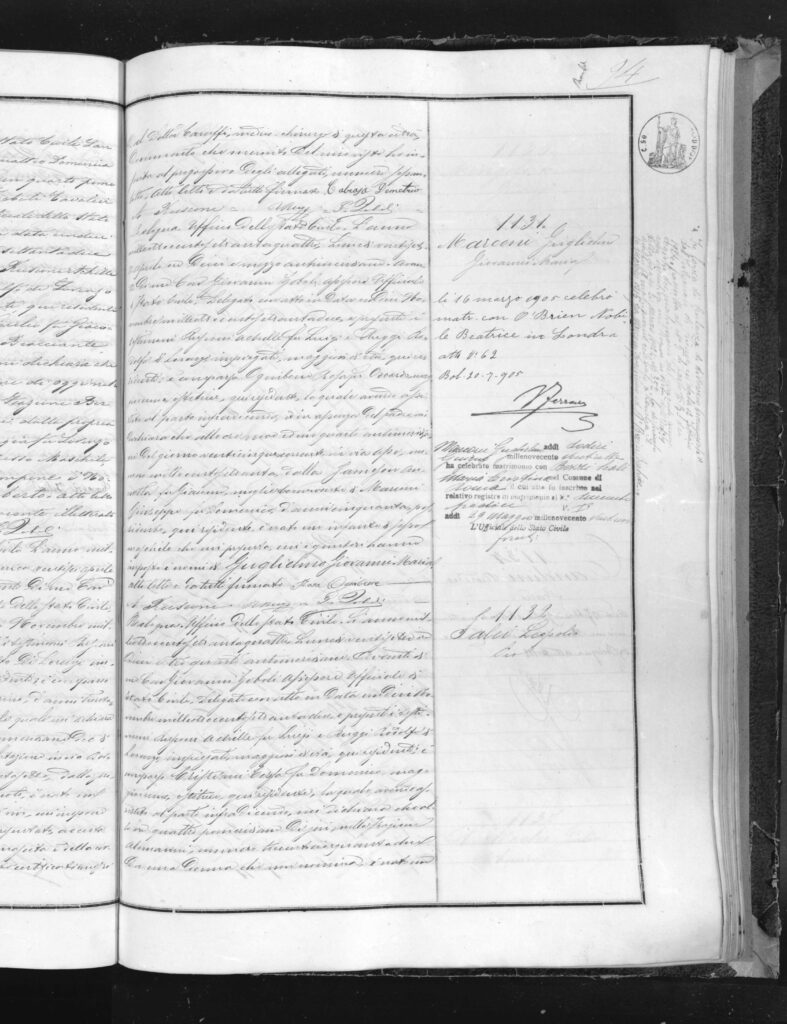Guglielmo Marconi (1874-1937)
Guglielmo Giovanni Maria Marconi was born in Bologna on 25 April 1874, to Giuseppe, a wealthy landowner, and Annie Jameson, an Irishwoman and granddaughter of the founder of the well-known Jameson&Son distillery.
He spent his childhood in the family villa near Sasso Marconi (BO), where he received a mainly private, occasional and highly experimental education. This, together with his acquaintance with the scientist Augusto Righi, indelibly marked his path. While still very young, in fact, he began self-taught experiments in transmitting signals at a distance, until, in the summer and autumn of 1895, the device he was working on succeeded in transmitting and receiving signals for over a mile, even in the presence of natural obstacles.
The sensationality and usefulness of his inventions made it necessary for him to move to the United Kingdom in order to more easily obtain funding to perfect his work. He moved to London and there, on 2 July 1897, obtained a patent for a wireless telegraphy system. At the same time, he also inaugurated the first company he owned, the Wireless Telegraph and Signal Company.
As his fame grew, his inventions also became more and more refined, to the point of enabling the transmission of signals overseas. These experiments were finally fine-tuned in 1907, so much so that in October of that year his company, renamed the Marconi Company, inaugurated the first public radiotelegraphy service across the Atlantic Ocean, allowing ships to launch wireless SOS.
The usefulness of radio rescue at sea became apparent on 23 January 1909, when thanks to the efficiency of this device, the more than 1,700 passengers of the ocean liner Republic, which was about to sink due to a ramming, were saved.
This event of worldwide resonance was also decisive for the awarding of the Nobel Prize in Physics that same year, which Marconi shared with the German physicist Carl Ferdinand Braun.
The following years continued to be full of experimentation and progress, especially from 1919 onwards when he purchased the yacht ‘Elettra’, which he set up as a station for his research, resulting in some of the most famous experiments in signal transmission between one continent and another.
In the following years, Marconi was appointed to various institutional positions: in 1927, he was appointed president of the National Research Council and, in 1930, of the Royal Academy of Italy, automatically becoming a member of the Grand Council of Fascism.
Moreover, when the Vatican Radio station was inaugurated on 12 February 1931, the opening greeting of which was given by Marconi himself and the then Pope Pius XI, this service earned him the appointment of Pontifical Academician and the award of the Grand Cross of the Order of Pius IX.
Following a severe heart attack, Guglielmo Marconi died in Rome on 20 July 1937.
The national importance of his figure and the consideration of his genius were manifested with the celebration of his state funeral, attended by eminent personalities of the time, including Benito Mussolini himself, along with a crowd of over 500,000 people. His face was also engraved on the 2000 lire banknotes issued between 1990 and 1992.
You can consult the birth certificate on the Ancestry Portal: Bologna State Archives > Italian Civil Status > Bologna > Register 287
In the margin, there is a stationery note marking the marriage to his first wife, the Irishwoman Beatrice O’Brien, which was celebrated in London on 16th May 1905 and from whom Marconi divorced in 1924. Just below, the marriage deed with his second wife, Maria Cristina Bezzi-Scali, which took place in Rome on 12th June 1927, is marked.
The original is kept at the State Archives of Bologna.
For more on the figure of Guglielmo Marconi, see the entry in the Dizionario Biografico degli Italiani edited by Maria Grazia Ianniello.

